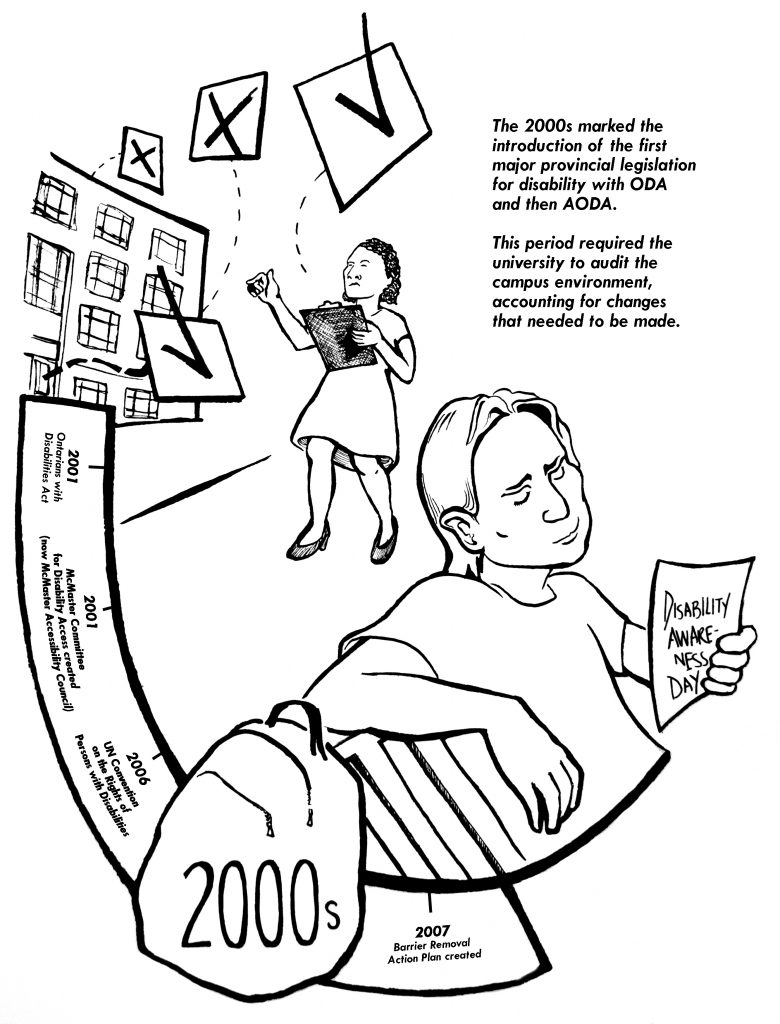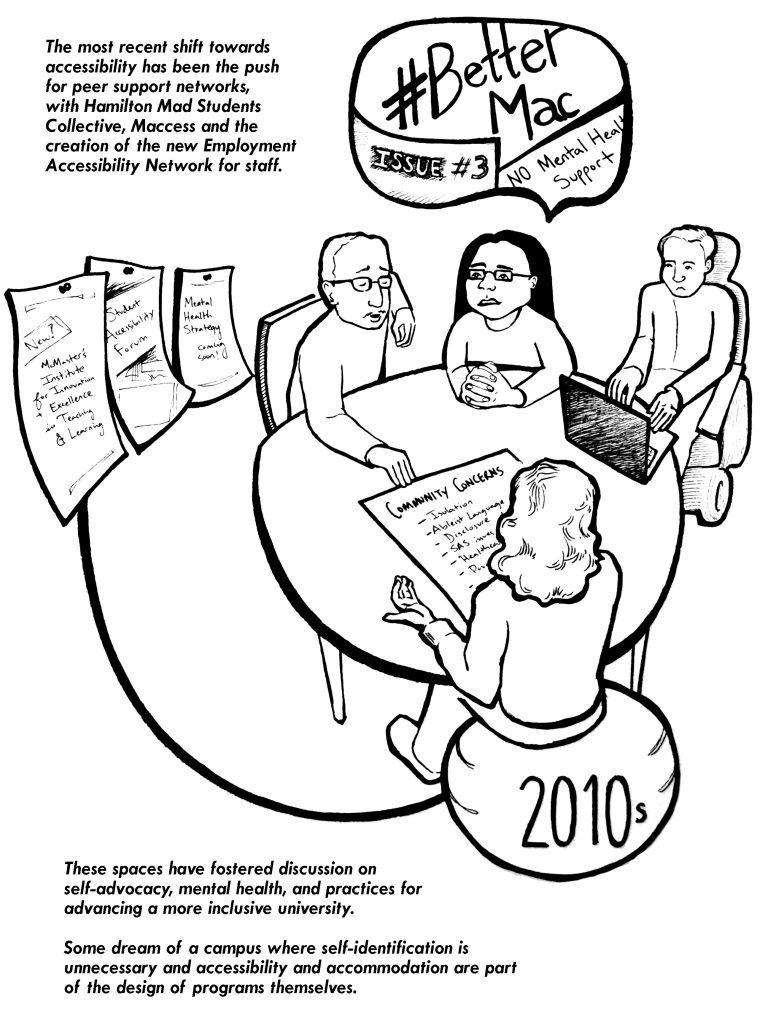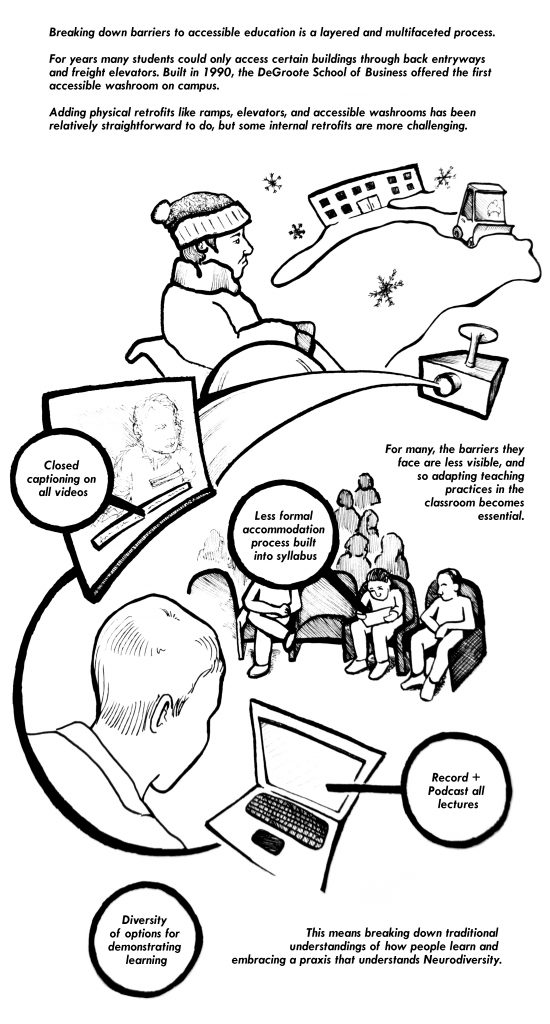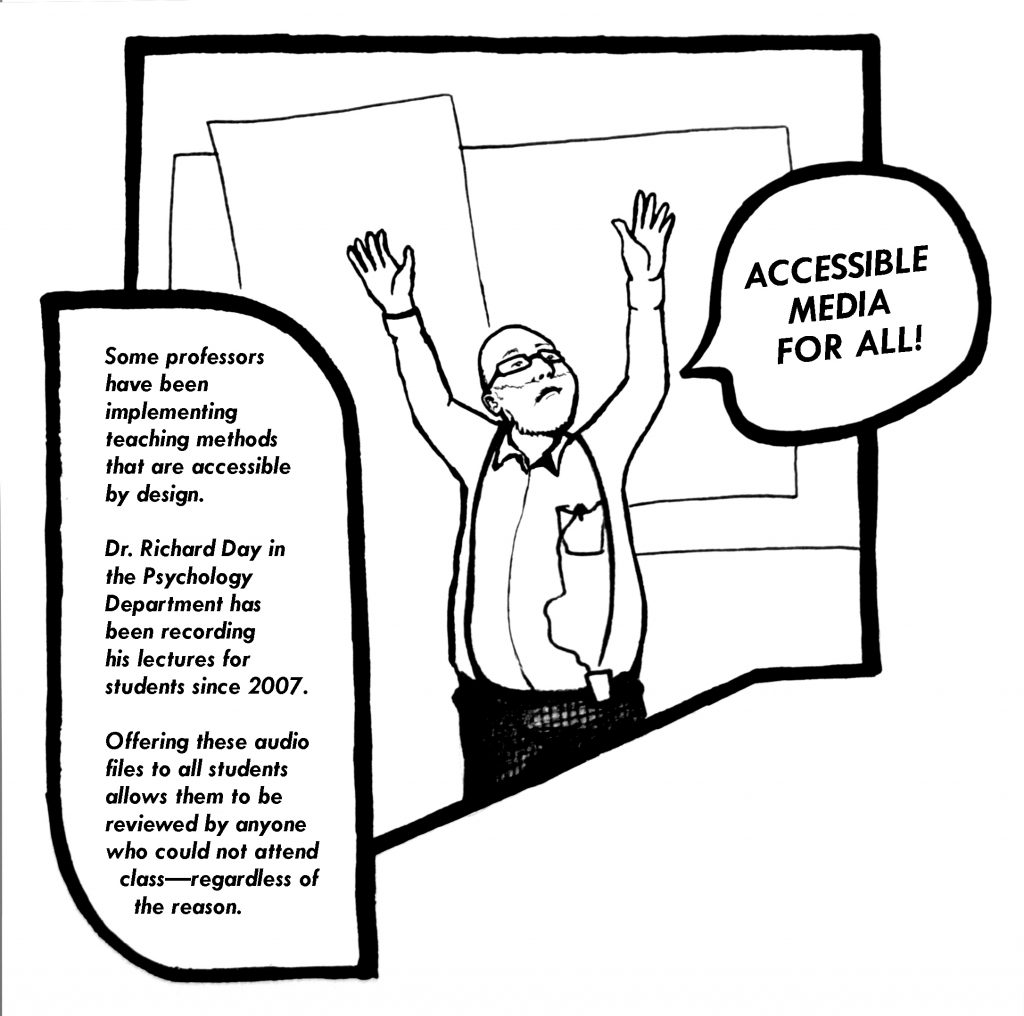Decades: 2000s

The 2000s marked the introduction of the first major provincial legislation for disability with ODA and then AODA. This period required the university to audit the campus environment, accounting for changes that needed to be made.
Timeline events:(2001) Ontarians with Disabilities Act; (2001) McMaster Committee for Disability Access created (now MAC); (2006) UN Convention on the Rights of Persons with Disabilities; (2007) Barrier Removal Action Plan created.
decades: 2010s

The most recent shift towards accessibility has been the push for peer support networks, with Hamilton Mad Students Collective, Maccess and the creation of the new Employment Accessibility Network for staff. These spaces have fostered discussion on self-advocacy, mental health, and practices for advancing a more inclusive university. Some dream of a campus where self-identification is unnecessary and accessibility and accommodation are part of the design of programs themselves.
We see accessibility being incorporated into campus renovations and projects constantly
Breaking Down Barriers: Visible + Invisible

Breaking down barriers to accessible education is a layered and multifaceted process. For years many students could only access certain buildings through back entryways and freight elevators. Built in 1990, the DeGroote School of Business offered the first accessible washroom on campus. Adding physical retrofits like ramps, elevators, and accessible washrooms has been relatively straightforward to do, but some internal retrofits are more challenging.
For many, the barriers they face are less visible, and so adapting the classroom environment becomes essential. This means breaking down traditional understandings of how people learn and embracing a praxis that understands Neurodiversity.
Examples of adaptations include: Closed captioning on all videos; Less formal accommodation process built into syllabus; Record + Podcast all lectures; Diversity of options for demonstrating learning.
Models of Teaching Practice: Social Work & Rick Day

Some professors have been implementing teaching methods that are accessible by design. Dr. Richard Day in the Psychology Department has been recording his lectures for students since 2007. Offering these audio files to all students allows them to be reviewed by anyone who could not attend class—regardless of the reason.
The Department of Social Work has also been instrumental in adopting inclusive curriculum, aiming to combat ableist narratives in the classroom. They hosted an Accessibility Makeover Project in the department with the passage of AODA to determine ways to make the curriculum more accessible. The student Disability Action Group (DAG) also hosted a panel called “Coming Out of the Disclosure Closet” to share the problems with disclosure from a student perspective.
Introduction to Student Narratives

“In telling the story of disability at Mac, the policy paper trail leaves out the stories of the many activists who pushed for change. In 2018, we interviewed alumni and current students who shared the work they’ve done to demand and create a barrier-free campus. Of the 7 current and former students we spoke with, 5 described experiencing madness/ mental health struggles and 5 as experiencing physical disabilities, including chronic pain and illness. Two identified as Mad and one reclaimed being “crippled” as a politicized identity. Two identified as people of colour, two as LGBTQ* and one as gender non-binary. These students were involved with PACBIC, Maccess, SAS, DAG, HMSC*, the Accessibility Forum Planning Committee, and the MSU Abilities Pillar. Here we share some of their stories.
*All acronyms listed at the end
